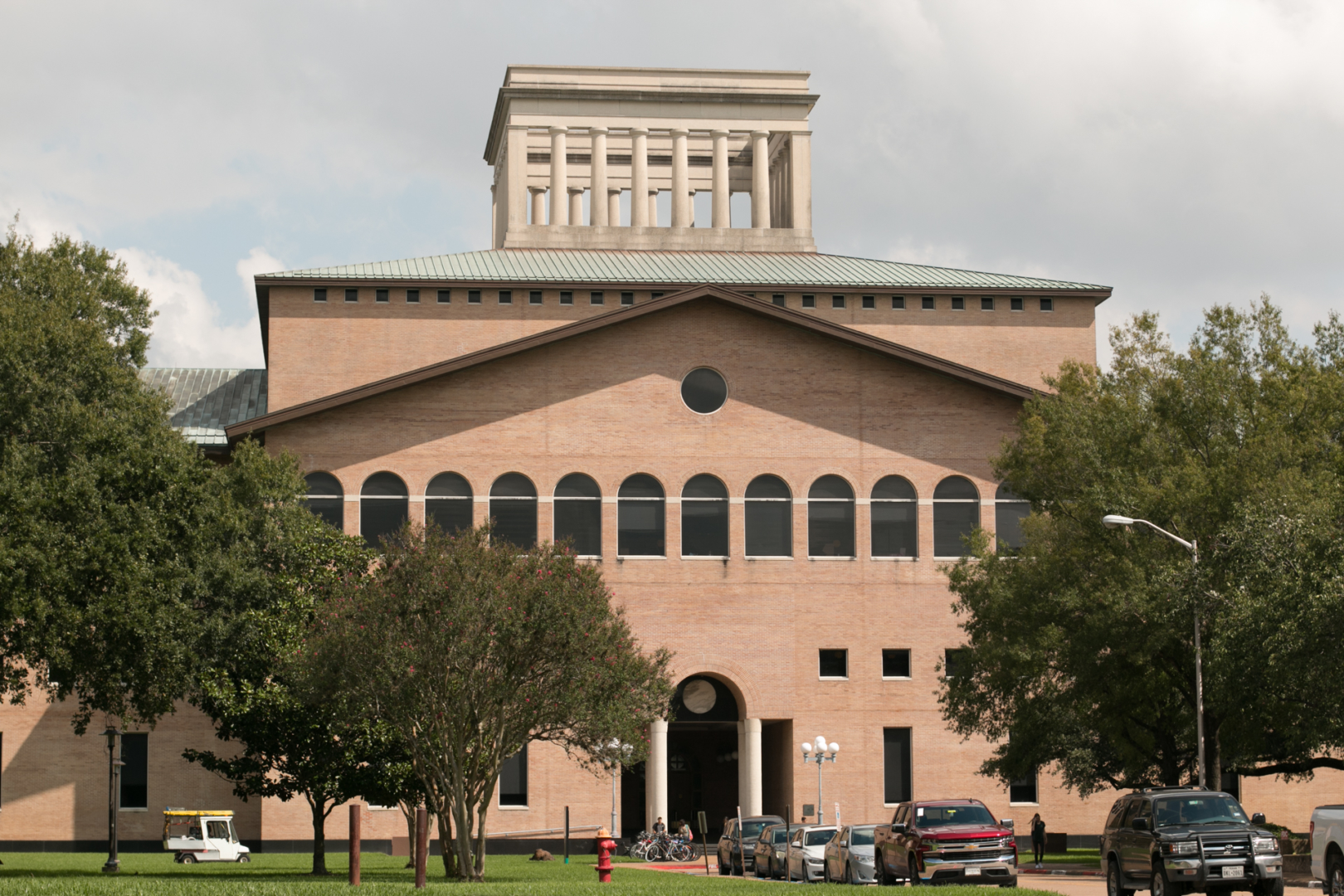

The Gerald D. Hines Architecture Building houses the architecture school, which is ranked among the top 40 programs in the U.S. | Bernadette Tumaliuan/The Cougar
The moment one steps foot on the UH, the Gerald D. Hines College of Architecture almost seems to demand that attention be focused upon it.
The building is certainly eye-catching, but where does its unique design stem from? The building was loosely based on the designs of the French Neo-Classical architect Claude-Nicholas Ledoux, according to architecture professor Patrick Peters.
“[The building] was a post-modern interpretation of a project Ledoux made for his unbuilt Ideal City of Chaux, France,” Peters said. “It had originally been designed to be the ‘House of Education’.”
Ledoux’s concept for the city of Chaux, originally proposed in the late 18th century, never came to fruition, nor did his original design for the “House of Education.” However, the unique look would not be left to rest in the annals of history.
In 1982, the UH administration was eager to finalize a design for the architecture building. After an open design competition was proposed and then later scrapped, University officials chose renowned architect Philip Johnson to head the project.
The University’s Architecture, Design and Art Library Coordinator Catherine Essinger emphasized the historical importance of Johnson’s design inspiration.
“Ledoux’s design was never implemented, so this is the only iteration of his work,” Essinger said. “It’s not a direct copy, however. Johnson and his partner, John Burgee, changed the dimensions and used many of their signature postmodern elements.”
At the time it was created, the building was considered to be a much-needed addition to a campus that, while impressive, lacked flair in the design of its structures. Now though, the architecture building, especially the atrium, has become a well-loved space, said Peters.
“The space comes alive when it is the site of large public events,” Peters said. “Large ideas are the most well-suited to this heroic space.”
news@thedailycougar.com
—
“A look back: how the Hines Architecture building came to be” was originally posted on The Cougar
